#Sephardim Jews
Explore tagged Tumblr posts
Text
a sad story about a beautiful jewish culture; i recommend we all fall down this rabbit hole.
i think this is something we should spread awareness about as jews, because they aren’t the only ones who’s rich and unique traditions may be lost.
**EDIT: THIS ARTICLE IS FROM 2014
more recent wikipedia article
530 notes
·
View notes
Text
today is july 15, the anniversary of Queen Regent María Cristina de Borbón abolishing the spanish inquisition in 1815.
to honor the jewry of that region, my mother’s people, who suffered at the hands of that horrific organization, i wanted to post some excerpts from Forgotten Giants by Rabbi Yosef Bitton and other things people don’t typically know:










the inquisition was abolished 300+ years later. it existed and held power for over 300 years. (1815 is particularly interesting bc napoleon got rid of the second class citizenship of jews and closed the ghettos and gave us basic human rights…and then when he was defeated, our rights were stripped away again. but also cristina abolishing it was a moot point then. the emancipation etc came from napoleon and his reforms. )
spain would go on to learn NOTHING from this history and continue to stew in jew hatred to this day after spending decades as a fascist nation. portugal has learned nothing either.
66 notes
·
View notes
Text
Jumblr, it'd be awesome if you could help out a small and/or new Jewish community and band. Plus, you only have to listen to an Instagram reel to do it.
One of the new Jewish organizations near me helped to put out a song for Hanukkah this year, a rock version of the Ladino song "Ocho Kandelikas". I marked Yom Kippur and Kabbalat Shabbat with the guy who did some of the singing/guitar/music direction. He is a Cool Dude who deserves the support!
It would be really awesome if y'all gave it a listen and some positive interactions. It is here; I can't make the embed links work for reasons that are mysterious to my elderly self.
A lot of folks in the community speak English and Hebrew as well as Spanish, so you have options when it comes to what language to write your comment in.
#jumblr#judaism#ladino#sephardim#sephardic jews#music#jewish musicians#ocho kandelikas#jewish music#jewish#jew in progress#jewish convert#spanish jews#argentine jews
78 notes
·
View notes
Text
Argh I was looking at my eyes in the mirror and started thinking about how Jewish they look. And then I just started crying because like. I’ve seen my eyes in so many Jews, in so many eras. The same eye shape, the same heavier lids and under eyes and dark brown irises and slight slope and intensity and just. So many times and places and histories of our people, and I can see my eyes. And they are so, so beautiful
#I think this is how so many other Jews think of their noses#our features are shared and they are amazing#Jewish stuff#jewish positivity#jumblr#some nice stuff for a change#I was looking at some pictures of Ashkenazim#and I’m only around 10% Ashkenazi— maybe less because Transylvania bordered the Ottoman Empire so we suspect mixing with Sephardim there#but I could see my eyes in so many of them#and my mother too (even though she has absolutely no Ashkenazi heritage)#we really are one people huh
122 notes
·
View notes
Text

Jews in Athens, 1930s
#greek jews#jumblr#sephardim#i have a couple more photos of them too#but this one has the nicest shot of the parthenon
71 notes
·
View notes
Note
I’m an American ashki Jew. Would you be so kind to explain the difference between Sephardic and Mizrahi Jews? I’m trying to educate myself but Google has conflicting answers. If you are not in the mood to educate that’s fine too-I understand it’s exhausting. Have a wonderful day
Sure!
So before we start, it's important to note that those terms are used interchangeably in some contexts (Like when discussing Halacha and minhagim, or when you live in Israel). But still, what do they mean??
We're discussing two distinct groups of diasporas in Jewish history. The first one would be Mizrahim. Mizrakh in Hebrew means "east". We're talking about Jews who were exiled from Israel towards the east, as early as the first (Babylonian) exile in 597 BC. If you look in a map, Eastern of Israel, we can find Iraq (Babylon), Iran (Persia), Syria, Afghanistan, Kurdistan, and likewise. Before Harav Ovadia Yosef zt"l made his revolution, basically every such community had their own distinct traditions. These are some of the most ancient diasporas there are.
When we say Sepharadim, as the name might suggest, we refer to people who came from Spain— Sepharad in Hebrew. In 1492, the Spanish Kingdom expelled its Jews or forced them to convert to Christianity, in what is considered, to this day, one of the most traumatic days in Jewish history. Those who had the means to leave left, many of them to the then-friendlier Muslim northern African countries, like Morocco, Libya, Algeria, and so forth. But Balcan Jews, Greek Jews, and similar such communities are also considered Sepharadic.
In fact, Harav Ovadia Yosef zt"l made a revolution in the way he united both these big sub-groups into one group for the matter of Halacha, Nusach Tefilah and some traditions (although of course, each community keeps their own distinct traditions as well, with food, with marriage minhagim and with some holidays' parts of service).
The vast majority of both Mizrahi Jews and Sepharadi Jews live in Israel, following their mass exodus from Muslim and Arab countries in 1948 (ethnic cleansing, anyone? no...?), where, after Harav Yosef's union, they're called Mizrahi Jews/edot HaMizrakh (the communities of the East) or Sepharadim, depending on the context.
We use the Edot HaMizrakh siddurs, as the Sepharadic ones are used by Hasidic Jews.
I hope I managed to clarify something :) and feel free to ask away if not!
22 notes
·
View notes
Text
Being Jewish is destiny and a blessing, but it's also damn challenging, I mean a lot...
#jewish#jumblr#judaism#reform judaism#antisemitism#moroccan jews#sephardim#jewish joy#phrases#life quotes
36 notes
·
View notes
Text
Adafina: The Classic Sephardic Sabbath Stew

🇺🇸 Adafina is a classic Sephardic Sabbath stew similar to cholent among Ashkenazi Jews. It was prepared before sundown to comply with Sabbath laws, ensuring a ready meal the next day. This slow-cooked stew combines meats, vegetables, chickpeas, and eggs, transforming these ingredients into a delicately textured and flavorful dish. The recipe emphasizes using organic ingredients to enhance the taste, with the key ingredient being time, as the long cooking period perfects the flavors.
🇪🇸 La adafina es un guiso clásico sefardí para el sábado, similar al cholent entre los judíos asquenazíes. Se preparaba antes del atardecer para cumplir con las leyes del sábado, asegurando una comida lista para el día siguiente. Este guiso cocido a fuego lento combina carnes, vegetales, garbanzos y huevos, transformando estos ingredientes en un plato de textura delicada y sabor exquisito. La receta destaca el uso de ingredientes orgánicos para mejorar el sabor, siendo el tiempo el ingrediente clave, ya que el largo período de cocción perfecciona los sabores.
🇮🇱 La adafina es un guiso klasiko sefardí para el Shabat, parecido al cholent entre los djidyos ashkenazis. Se preparava antes del eskurezimiento para kumplir kon las layes del Shabat, assegurando una komida lista para el día sigyente. Este guiso kochido a fuego lento kombina karnes, verduras, garvanzos i wevos, transformando estos ingredyentes en un plato de textura delicada i sabor eskisito. La rezetika sujere uzar ingredyentes organyikos para mejorar el sabor, siendo el tiempo el ingredyente klave, pues el largo peryodo de kochura perfecciona los sabores.



#judaísmo#judaism#jewish#judío#cultura judía#jumblr#judíos#sephardic food#sephardic jews#sephardim#sephardic#adafina#classic sephardic stew#sabbath#sabbath stew#hamim#jews#españa#adafinas#plato sefardí#comida sefardí#guiso sefardí#guiso#judíos asquenazíes#cholent
82 notes
·
View notes
Note
Can anyone recommend jinsta accounts that focus on sephardim/mizrahim? Thank you ❤
.
#jumblr#ask jumblr#judaism#jewblr#jewish#mizrahi jews#sephardic#sephardim#mizrahim#jinsta#instagram#jewish media#jewish media request
17 notes
·
View notes
Text
! DONT FORGET !
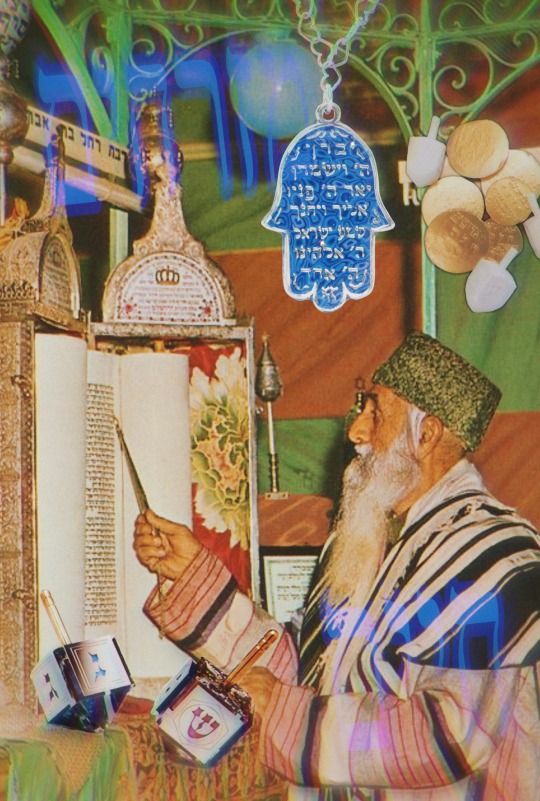
(Postcard of Mizrahi reading the Torah. Cant find much else)
Not all Jews are Ashkenazi so DONT TREAT US LIKE WE ARE!


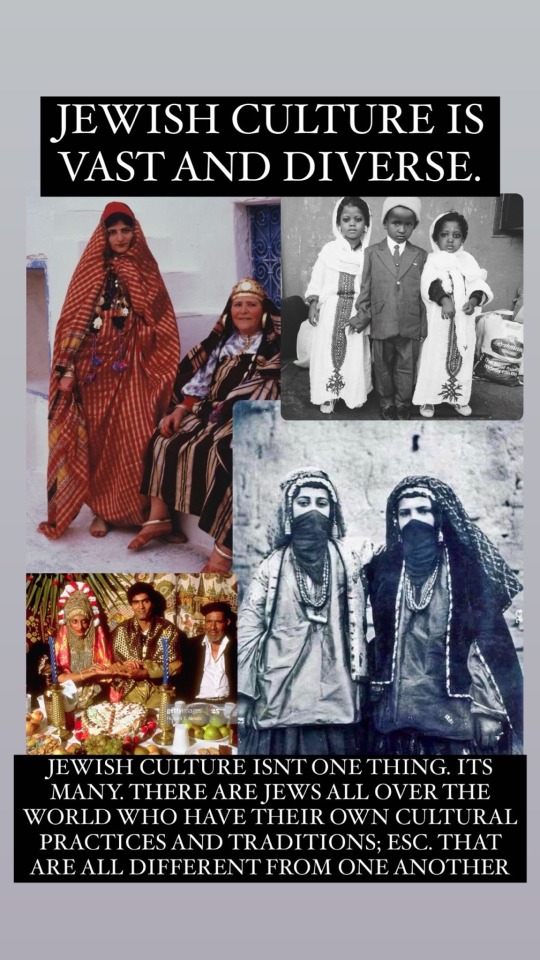
! DONT FORGET !
! WE ARE JEWISH TOO !
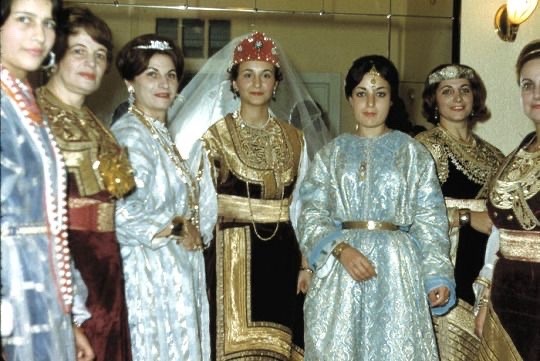
(Moroccan Jews at a henna party wearing Kaftans and Berberisca. The Berberisca dress; or ‘Keswa El Kbria’ is a Moroccan Jewish wedding dress.)
#jewish#jewish culture#mizrahi jews#mizrahim#mizrahi culture#arab jews#sephardic#sephardi jewish#sephardim#Sephardi culture#Berberisca#kaftan#arabic#hebrew#jews#jew stuff#queer jews#jews of color#morocco#moroccan jews#ethiopian jews#maghreb#jewish diaspora#diaspora#israel
76 notes
·
View notes
Text
Kabbalistic Siddur — Constantinople, Ottoman Empire (now Turkey), 1734 CE


This siddur was created by a Sephardi Jew living in Constantinople. Interestingly, it was written in a Persian style!
According to the curator: "This Kabbalistic prayer book, or "siddur", has one of the most beautiful title pages among Persian Hebrew manuscripts as well as an exquisite foldout rendering of the menorah formed with the text of the 67th psalm. The Koran-type illumination on the title page, so unusual for a Hebrew manuscript, along with the gold leaf frames for each and every page of text would suggest that the scribe purchased a blank book that had been prepared for a Koran and wrote inside his siddur, his daily prayer book.
All the prayers are according to the way of the Kabbalah, many with "Kavanot" (special devotional forms, meanings and mystical meditations). This manuscript covers the "winter" period, containing the daily, Sabbath and new month prayers from Chanukah to Purim, approximately December through March. This is a prime example of a manuscript prayer book according to the Kabbalah in the Eastern tradition. While the date of the writing is recorded as 1734, the scribe has not left us his name or location in a colophon."
#jewish#judaism#jewish history#jewish art#religious objects#ottoman jews#swana jews#mizrahi jews#kabbalah#sephardic#sephardim#sephardi
11 notes
·
View notes
Text
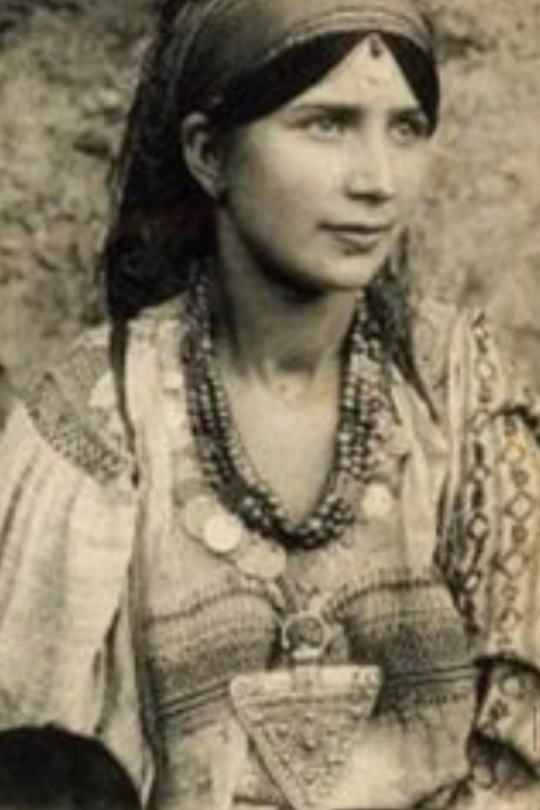
North African Jewish Woman, likely to be Berber, of Debdou, Morocco.
#Berber#Morocco#israel#secular-jew#jewish#judaism#israeli#jerusalem#diaspora#secular jew#secularjew#islam#shoah#antisemitism#islamism#Muslim#Jews of MENA#MENA Jews#MENA#levant#mizrahi Jews#sephardic#sephardim#sephardi jewish
43 notes
·
View notes
Text
Taking Intro to Judaism is wild when you're converting to a Sephardic community.
We've had two classes in a row about kashrut. The Rabbi is Ashkenazi. He is also trying to teach us all the of the rules so we'll do fine before the biet din. So he's going down the list of stuff like "Probably no turkey, definitely no Fanta Naranja, no food from restaurants that aren't kashrut, milk and meat plates", etc. And again, I get it. He doesn't expect us to follow all of these rules all at once, we're just being educated.
But one thing I'm finding about Spanish Sephardim is that it's an even harder-core kind of diaspora. There's a broad tolerance for, or lack of observance of, food-related rules that I find fascinating.
Kitniyot are something we're expected to know about, but around here, you can have beans and rice during Pesach. During kabbalat shabbat, we were complaining about how it's impossible--not tricky, impossible--to get Passover wine while drinking plain old normal red wine the day after the Rabbi laid down all the rules about handling grapes.
The Rabbi was like "here look I carry a card with all the banned substances listed on it so when I shop I won't buy something with an insect- or blood-based preservative". Which is cool! But meanwhile, the cantor was like "holy shit, bro, how are you and your wife avoiding eating pork and shellfish IN SOUTHERN SPAIN, you are very serious about being Jews aren't you".
It just seems very Spanish to me (affectionate) to learn the rules and then shrug in their general direction because whatyagonnado?
Anyhow, I howled in agony over Fanta Naranja, but I think giving it up would be best anyway. Probably keeping turkey on the menu, though.
#jumblr#jewish conversion#jew by choice#jew in progress#kashrut#jewish#sephardim#ashkenazim#not intended to be an all inclusive or academic statement#is-the-fire-real original
35 notes
·
View notes
Text
youtube
this version of Hatikva by Daniel Saadon appeared on my youtube home page and I was so grateful! this version is upbeat, celebratory, and while the original Hatikva is gorgeous, I also love how this one incorporates a Mizrahi sound and lyrics for the modern day while keeping the original lyrics. The music video is also a great watch.
I suggest everyone give this version a listen if you have not already.
#jewish#jumblr#chana talks#judaism#israel#am yisrael chai#i stand with israel#ישראבלר#ישראל#עברית#עם ישראל חי#mizrahi#mizrahi jews#sephardic#sephardim#Youtube
39 notes
·
View notes
Text
Who are the Mizrahim? History 101
Where do Jews come from and what is the difference between Sephardim and Mizrahim? Loolwa Khazzoom gives this succint explanation for the Jewish Virtual Library:
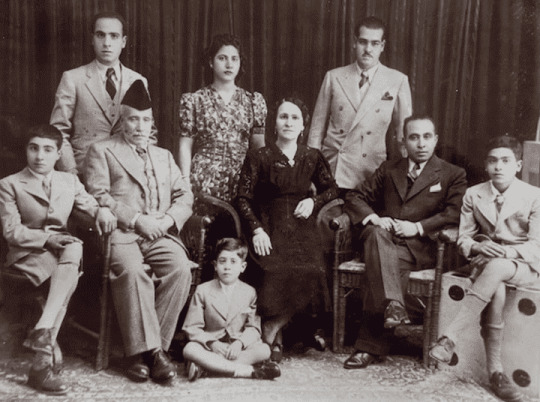
A Baghdadi Jewish family
Regardless of where Jews lived most recently, therefore, all Jews have roots in the Middle East and North Africa. Some communities, of course, have more recent ties to this region: Mizrahim and Sephardim, two distinct communities that are often confused with one another.
Mizrahim are Jews who never left the Middle East and North Africa since the beginnings of the Jewish people 4,000 years ago. In 586 B.C.E., the Babylonian Empire (ancient Iraq) conquered Yehudah (Judah), the southern region of ancient Israel.
Babylonians occupied the Land of Israel and exiled the Yehudim (Judeans, or Jews), as captives into Babylon. Some 50 years later, the Persian Empire (ancient Iran) conquered the Babylonian Empire and allowed the Jews to return home to the land of Israel. But, offered freedom under Persian rule and daunted by the task of rebuilding a society that lay in ruins, most Jews remained in Babylon. Over the next millennia, some Jews remained in today’s Iraq and Iran, and some migrated to neighboring lands in the region (including today’s Syria, Yemen, and Egypt), or emigrated to lands in Central and East Asia (including India, China, and Afghanistan).
Sephardim are among the descendants of the line of Jews who chose to return and rebuild Israel after the Persian Empire conquered the Babylonian Empire. About half a millennium later, the Roman Empireconquered ancient Israel for the second time, massacring most of the nation and taking the bulk of the remainder as slaves to Rome. Once the Roman Empire crumbled, descendants of these captives migrated throughout the European continent. Many settled in Spain (Sepharad) and Portugal, where they thrived until the Spanish Inquisition and Expulsion of 1492 and the Portuguese Inquisition and Expulsion shortly thereafter.
During these periods, Jews living in Christian countries faced discrimination and hardship. Some Jews who fled persecution in Europe settled throughout the Mediterranean regions of the Ottoman (Turkish) Empire, as well as Central and South America. Sephardim who fled to Ottoman-ruled Middle Eastern and North African countries merged with the Mizrahim, whose families had been living in the region for thousands of years.
In the early 20th century, severe violence against Jews forced communities throughout the Middle Eastern region to flee once again, arriving as refugees predominantly in Israel, France, the United Kingdom, and the Americas. In Israel, Middle Eastern and North African Jews were the majority of the Jewish population for decades, with numbers as high as 70 percent of the Jewish population, until the mass Russian immigration of the 1990s. Mizrahi Jews are now half of the Jewish population in Israel.
Throughout the rest of the world, Mizrahi Jews have a strong presence in metropolitan areas — Paris, London, Montreal, Los Angeles, Brooklyn, and Mexico City. Mizrahim and Sephardim share more than common history from the past five centuries. Mizrahi and Sephardic religious leaders traditionally have stressed hesed (compassion) over humra (severity, or strictness), following a more lenient interpretation of Jewish law.
Despite such baseline commonalities, Middle Eastern and North African Mizrahim and Sephardim do retain distinct cultural traditions. Though Mizrahi and Sephardic prayer books are close in form and content, for example, they are not identical. Mizrahi prayers are usually sung in quarter tones, whereas Sephardic prayers have more of a Southern European feel. Traditionally, moreover, Sephardic prayers are often accompanied by a Western-style choir in the synagogue.
Mizrahim traditionally spoke Judeo-Arabic — a language blending Hebrew and a local Arabic dialect. While a number of Sephardim in the Middle East and North Africa learned and spoke this language, they also spoke Ladino–a blend of Hebrew and Spanish. Having had no history in Spain or Portugal, Mizrahim generally did not speak Ladino.
In certain areas, where the Sephardic immigration was weak, Sephardim assimilated into the predominantly Mizrahi communities, taking on all Mizrahi traditions and retaining just a hint of Sephardic heritage — such as Spanish-sounding names. In countries such as Morocco, however, Spanish and Portuguese Jews came in droves, and the Sephardic community set up its own synagogues and schools, remaining separate from the Mizrahi community.
Even within the Mizrahi and Sephardi communities, there were cultural differences from country to country. On Purim, Iraqi Jews had strolling musicians going from house to house and entertaining families (comparable to Christmas caroling), whereas Egyptian Jews closed off the Jewish quarter for a full-day festival (comparable to Mardi Gras). On Shabbat, Moroccan Jews prepared hamin (spicy meat stew), whereas Yemenite Jews prepared showeah (spicy roasted meat), among other foods.
Read article in full
The post Who are the Mizrahim? History 101 appeared first on Point of No Return. Read in browser »
75 notes
·
View notes
Text

Applications are officially open! 🧿🍉🪬
We are Mizrahi Mayhem, a zine celebrating Jews from Asia, Africa, and the Mediterranean. All proceeds from the sale of this zine will be donated to the Palestine Children’s Relief Fund. We accept submissions in the form of artwork, photography, poetry, recipes, short fiction, and testimonials (creative nonfiction) — so if you’re a Jew of Asian and/or African heritage and you have something to say, we highly encourage you to submit your work!
🍉SUBMISSION GUIDELINES🍉
🪬FAQ🪬
🧿TIMELINE🧿
#mizrahi#mizrahim#mizrahi jews#jewish zine#jewish issues#jewish heritage#jewish#judaism#judaica#mena jews#arab jews#sephardic#sephardim#charity zine#jumblr#jewblr#zinester#jewish art#jewish artist#zine applications#zine apps open
29 notes
·
View notes